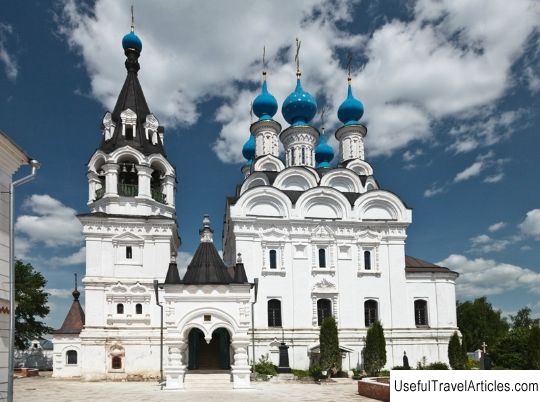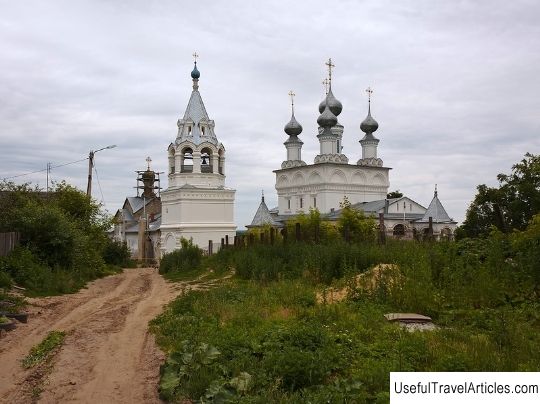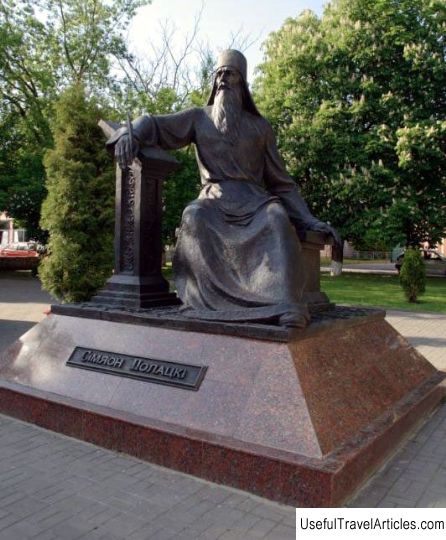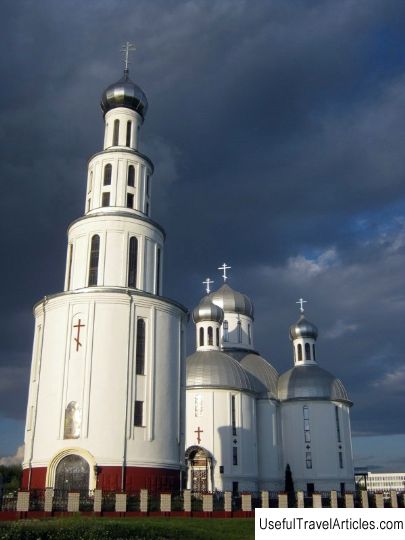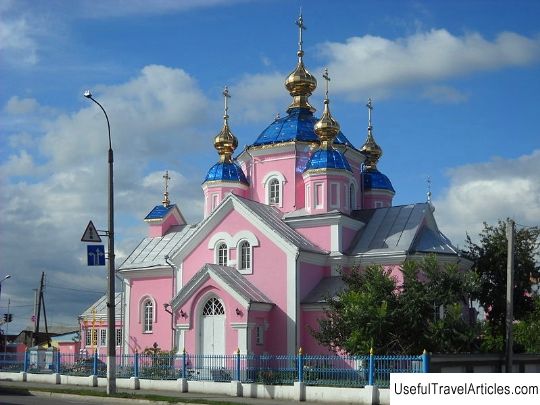Resurrection Cathedral of the Resurrection Monastery description and photos - Russia - Golden Ring: Murom
Rating: 8,2/10 (380 votes) 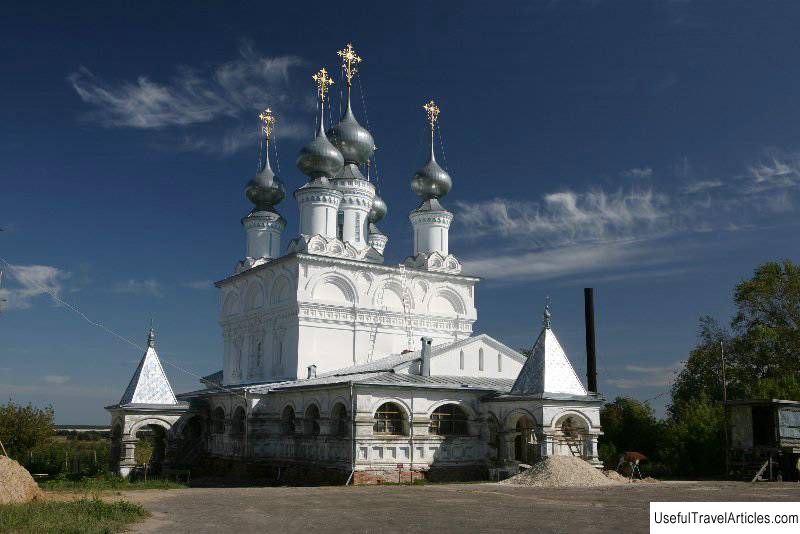
Resurrection Cathedral of the Resurrection Monastery description and photo - Russia - Golden Ring: Murom. Detailed information about the attraction. Description, photos and a map showing the nearest significant objects. Photo and descriptionThe Resurrection Cathedral, operating at the monastery of the same name, has much in common in architectural terms with the famous Cathedral of the Annunciation, because looking at them, one cannot fail to note such a strong similarity of forms and general composition. The external design of the Resurrection Church is especially simple and laconic, which fully coincides with the design of the Annunciation Church. The temple is equipped with four blades, which rest on a plinth made of white stone, marked with a pronounced profile. The main southern facade is divided into three parts, while the central pillar has two window openings. The window opening of the lowest tier, in comparison with other windows, is very widened and richly framed with an oriented platband in the form of beautiful pilasters, which rest on small consoles and end with keeled kokoshniks. The central window of the middle tier is large, while the side windows are somewhat elongated and are also framed with platbands with kokoshniks and pilasters, which are more modest in decoration. The pilasters carry a wide cornice belt, the frieze of which is made up of beads fitted with grooves, which is also shown in the Annunciation Cathedral. On each side, above the cornice, there are three kokoshniks, presented in the form of very deep arches with a somewhat elongated profile, as well as a keeled end. The arched feet are slightly different from the feet of the Annunciation Cathedral, because they are located strictly above the pilasters. In the interval between the kokoshniks there is a space filled with small kokoshniks, and their tops are on the same level with the tops of the zakomar kokoshniks. In the Resurrection Church, in contrast to the Trinity and the Annunciation Cathedrals, there is no second row of kokoshniks, and the church is covered with a hipped roof with a pulverized roof, on the surface of which there are cylindrical drums. The church ends with five onion-shaped chapters, with the drums resting on small kokoshniks set at right angles to each other. The corner drums are cut by several slot-like openings, while there are eight of them in the middle drum. They are very similar to corner drums openings. Their upper part is decorated with a rather impressive cornice with rough croutons, slightly increased by the results of plastering work carried out at the end of the 19th century. From the west, the Resurrection Church is adjoined by an elongated refectory located in the meridian direction, the appearance of which is especially characteristic of the 17th century style. The refectory is connected with the main temple by a large arched opening. On the western and northern sides, an open bypass gallery adjoins the temple, located on the basement, with two hipped porches and arched openings. The roof of the porches is hipped. On the surface of the southern wall plane of the refectory, which is divided by means of pilasters, there are three windows framed by platbands resting on pediments and consoles; pediments completely repeat the pattern of kokoshniks in the main part of the central volume. The apse is made in three parts and is connected to the main room of the temple by several arched openings, at the same time, the overlap was made using a domed roof. As mentioned, the Resurrection Church in general looks like the Trinity and Annunciation Cathedrals, but the architects did not copy all the elements exactly, but only borrowed some motifs, creating a different and original from the mentioned building, using improved architectural techniques. For example, the temple is covered with a four-pitched roof, while the interior lighting has been significantly improved due to the larger window openings located on the inside. Due to the arrangement of the four-pitched roof, the architect decided not to make another row of kokoshniks. Overlapping domes also confirm the true talent and skill of the architect. The facades are divided by blades into several parts, and on the wide belt of the cornice they are hardly distinguishable. Window openings are framed in the form of semi-columns with kokoshniks and rosettes.  We also recommend reading Castle Rotenturm (Schloss Rotenturm) description and photos - Austria: Burgenland Topic: Resurrection Cathedral of the Resurrection Monastery description and photos - Russia - Golden Ring: Murom. |
